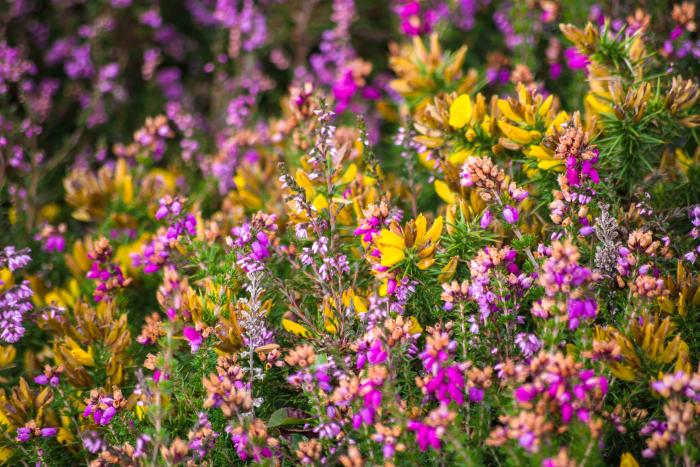
Gorse flowers year round but is at its most abundant in April, its delicate coconut fragrance is an unlikely pairing with its rigid, prickly spines. The dense structure it provides is a refuge for birds in harsh weather, essential for the survival of Dartford Warblers in winter.
It's a crucial nectar source during the colder months and really important for invertebrates - it's the food plant for the caterpillars of over 55 moths and butterflies, making it a larder for insect-eating birds like our ‘Darties’. Cleverly adapted to survive the low nutrient soils of heathland, gorse hosts a special bacteria in its root nodules that secures nitrogen from the air present within soil. Remarkable!